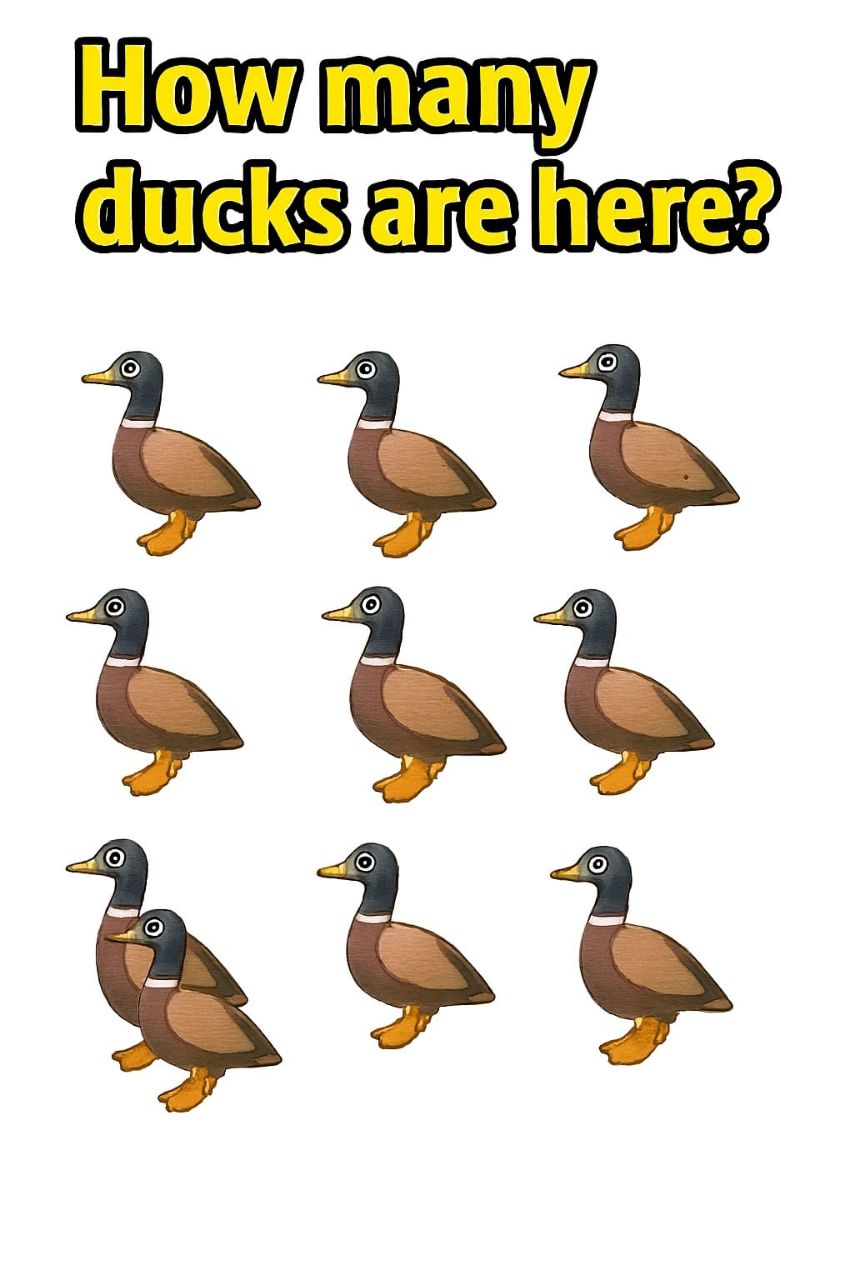How Optical Illusions Enhance Cognitive Observation Skills
Visual puzzles and optical illusions are more than just entertaining — they serve as valuable tools in assessing and improving cognitive functions such as attention to detail, perception, and analytical thinking. One such engaging example is a simple yet deceptive image asking viewers: “How many ducks are here?”
At first glance, the image appears to show nine ducks, neatly arranged in a 3×3 pattern. However, upon closer scrutiny, one notices an overlapping pair in the bottom-left corner, subtly hidden to test the observer’s focus and visual processing ability. The correct answer is 10 ducks, not 9 — a detail that many miss at first.
Why It Matters
This kind of visual task trains the brain to:
-
Improve focus: Distinguishing subtle visual cues hones concentration.
-
Enhance problem-solving: Identifying inconsistencies builds analytical reasoning.
-
Develop mindfulness: Slowing down to assess details is a core mindfulness practice.
-
Strengthen visual memory: Recognizing patterns and anomalies supports stronger memory retention.
In fields such as medicine, law enforcement, design, and engineering, the ability to detect small but critical visual information can be essential. Regular engagement with such visual exercises can improve these vital skills over time.
Conclusion
What seems like a playful puzzle is, in fact, a powerful cognitive tool. The simple question, “How many ducks are here?”, encourages us to slow down, look deeper, and challenge our assumptions — skills that are valuable far beyond the scope of the image.

